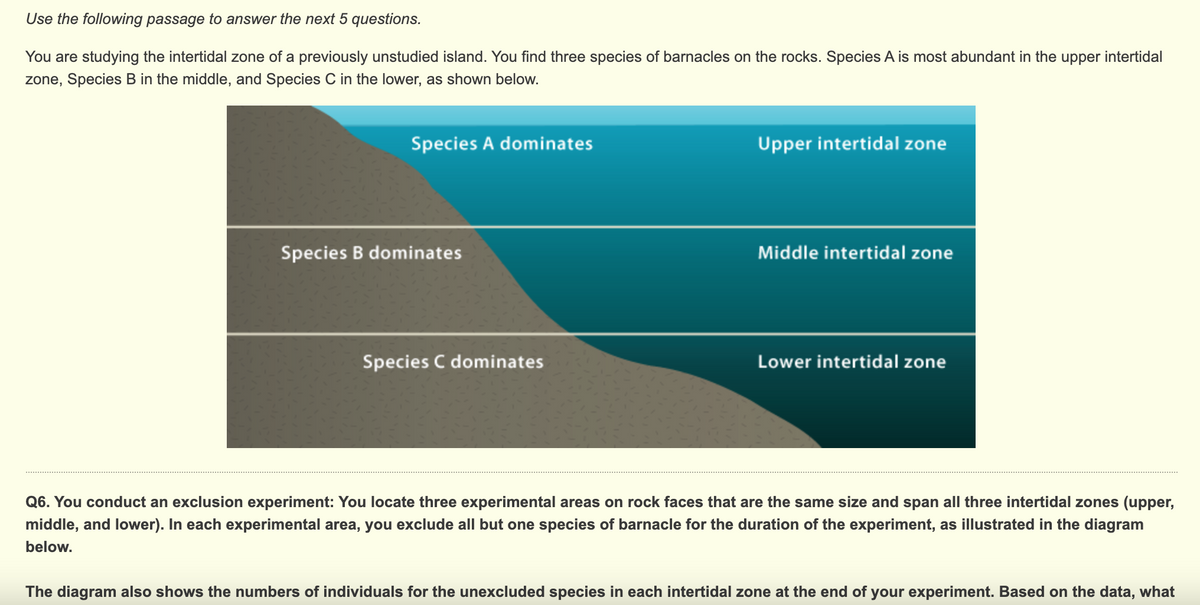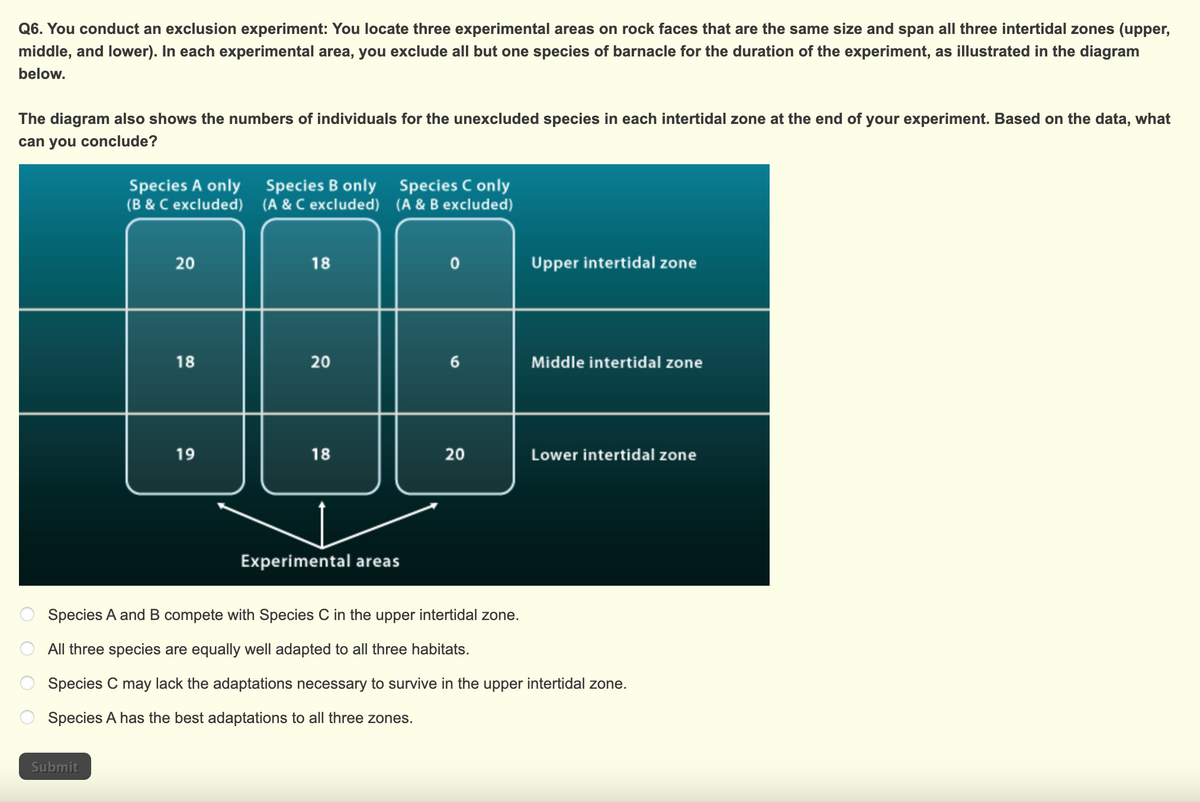Species A and B compete with Species C in the upper intertidal zone. All three species are equally well adapted to all three habitats. Species C may lack the adaptations necessary to survive in the upper intertidal zone. Species A has the best adaptations to all three zones.
Species A and B compete with Species C in the upper intertidal zone. All three species are equally well adapted to all three habitats. Species C may lack the adaptations necessary to survive in the upper intertidal zone. Species A has the best adaptations to all three zones.
Science Of Agriculture Biological Approach
5th Edition
ISBN:9780357229323
Author:Herren
Publisher:Herren
Chapter19: Wildlife Management
Section: Chapter Questions
Problem 1SLA
Related questions
Question

Transcribed Image Text:Use the following passage to answer the next 5 questions.
You are studying the intertidal zone of a previously unstudied island. You find three species of barnacles on the rocks. Species A is most abundant in the upper intertidal
zone, Species B in the middle, and Species C in the lower, as shown below.
Species A dominates
Upper intertidal zone
Species B dominates
Middle intertidal zone
Species C dominates
Lower intertidal zone
Q6. You conduct an exclusion experiment: You locate three experimental areas on rock faces that are the same size and span all three intertidal zones (upper,
middle, and lower). In each experimental area, you exclude all but one species of barnacle for the duration of the experiment, as illustrated in the diagram
below.
The diagram also shows the numbers of individuals for the unexcluded species in each intertidal zone at the end of your experiment. Based on the data, what

Transcribed Image Text:Q6. You conduct an exclusion experiment: You locate three experimental areas on rock faces that are the same size and span all three intertidal zones (upper,
middle, and lower). In each experimental area, you exclude all but one species of barnacle for the duration of the experiment, as illustrated in the diagram
below.
The diagram also shows the numbers of individuals for the unexcluded species in each intertidal zone at the end of your experiment. Based on the data, what
can you conclude?
Species A only Species B only Species C only
(B & C excluded) (A & C excluded) (A & B excluded)
20
18
Upper intertidal zone
18
6.
Middle intertidal zone
19
18
20
Lower intertidal zone
Experimental areas
Species A and B compete with Species C in the upper intertidal zone.
All three species are equally well adapted to all three habitats.
Species C may lack the adaptations necessary to survive in the upper intertidal zone.
Species A has the best adaptations to all three zones.
Submit
20
Expert Solution
This question has been solved!
Explore an expertly crafted, step-by-step solution for a thorough understanding of key concepts.
This is a popular solution!
Trending now
This is a popular solution!
Step by step
Solved in 2 steps

Recommended textbooks for you

